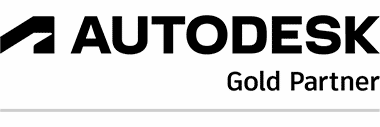Architecture tools have come a long way since the days of pencils and paper blueprints. Still, some of the field’s most advanced and helpful resources remain underutilized. If you want to make the most of your 3D metal building designs, you should use building information modeling (BIM).
BIM software offers a suite of tools for creating, refining and sharing digital building designs and other project information. This extensive functionality offers several benefits over more conventional approaches to architecture, especially when you know how to use them to their fullest.

Photo by Nao Triponez
Benefits of BIM in 3D Metal Building Design
Metal building projects can be challenging and expensive, but BIM tools make it easier. Here is a look at some of this technology’s most significant advantages.
Fewer Mistakes
One of the most critical features of any BIM solution is clash detection. This technology automatically recognizes and highlights errors so you can address them before starting the construction process. Considering how large projects can have between 2,000 and 3,000 clashes, that can save a lot of time and money.
Some structures may take up more room than they seem at first, making them impractical or impossible in practice. Alternatively, some designs may block entry from needed machines during later parts of construction. BIM clash detection lets you find and fix these mistakes before they arise, preventing costly rework.
These features can also detect “4D” or workflow clashes like scheduling conflicts. That way, you can avoid complications later on when they’re harder to fix.
Optimizing Building Designs
BIM can also improve 3D metal building design by improving project visibility. This software lets you view plans from multiple angles, run simulations and easily compare alternatives. This level of insight enables you to find the best way forward for your specific project.
Having an easily accessible view of all the materials in a project can help make more informed decisions, too. For example, aluminum is one-third the weight of steel and more corrosion-resistant, but steel is stronger, making them ideal for different applications. With BIM, you can look at how each would impact your metal building design to optimize your project.
These optimizations apply to project workflows as well. BIM models provide a consolidated view of all relevant project information, helping schedule teams across various phases more efficiently.
Easier Collaboration
Another benefit of BIM is it enables more collaboration on your metal building projects. Because these tools are entirely digital, you can send them to collaborators via a simple file attachment in an email. Some cloud-based platforms may even let multiple parties simultaneously access and modify BIM models.
This remote access and sharing lets you work with other stakeholders regardless of where you are. Because everyone will be working off the same file, it also helps minimize confusion. Many of the most common project management problems arise from miscommunication and a lack of clarity, so these collaborative features are essential.
In the design phase, this collaboration lets everyone offer their expertise in the areas they’re most experienced. In later stages, it helps avoid conflict by providing a single source of truth for the project.
Streamlined Project Timelines
These advantages work together to produce another valuable benefit — shorter project timelines. The construction sector is notorious for running behind schedule, with 85.5% of large-scale projects finishing late, often by at least two months. BIM’s clash detection and collaboration tools can reverse that trend.
Rework is a common source of delays and BIM prevents it through clash detection. When you fix these clashes before the construction phase, you minimize the risk of an unexpected setback arising and taking time to undo them. Avoiding workflow clashes further reduces timelines.
Using BIM models as a single, easily accessible source of truth helps, too. When everyone involved uses these resources, it’s easier to stay on the same page and prevent miscommunication. Teams will finish faster as a result, boosting client relationships and minimizing costs.
Making the Most of BIM
It’s hard to ignore BIM’s potential in 3D metal building design. If you want to experience that potential to its fullest, here are some steps and considerations to keep in mind.
First, define what you want from your BIM software, then look for solutions that meet those goals. Keep compatibility with other apps you use in mind. The same goes for any sources you use for ready-made 3D BIM models. Only use content from companies that meet the highest industry standards to avoid complications down the road.
Look for a solution with cloud support. If it runs on the cloud, it’ll be easier to share models with remote collaborators or access them remotely. This accessibility will help further improve communication and project timelines.
While BIM will save money in the long run, upfront costs are the most common barrier to BIM adoption today. You can minimize these concerns through slow, thoughtful implementation. Start with a relatively simple solution, using it on projects with the most potential to improve. As you learn to use it and start to reap its benefits, you can hire more professionals to use it and buy more extensions for the software.
BIM Revolutionizes 3D Metal Building Design
BIM is a crucial tool for 3D metal building design, especially given frequent delays and high costs. When you know how to benefit from these tools, you can use them effectively.
As with any new tool, it can take time to get used to BIM. However, if you start today, you can boost your organization’s performance and ensure success in the future.



